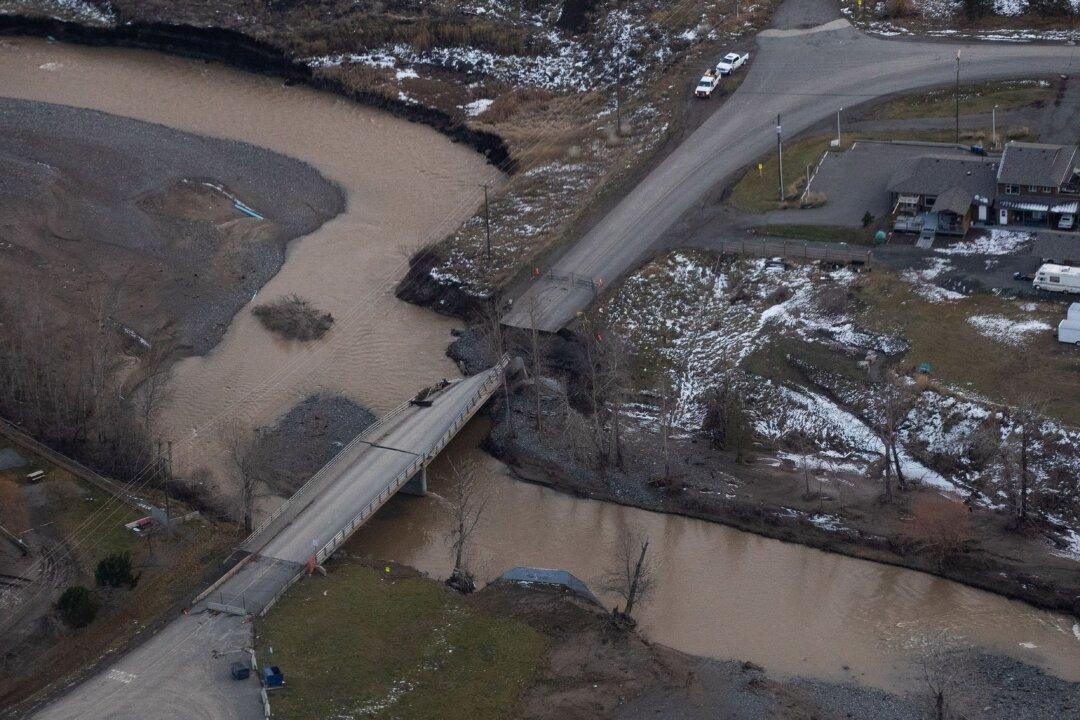Washed-out roads and flooded farmlands in British Columbia have brought to light dire infrastructure needs, which policy experts say other provinces also face as existing infrastructure ages and new and necessary infrastructure remains unbuilt.
A wet fall capped by torrential rain caused landslides and washed out eight B.C. highways. Some have been reopened for general travel and others for essential travel.





